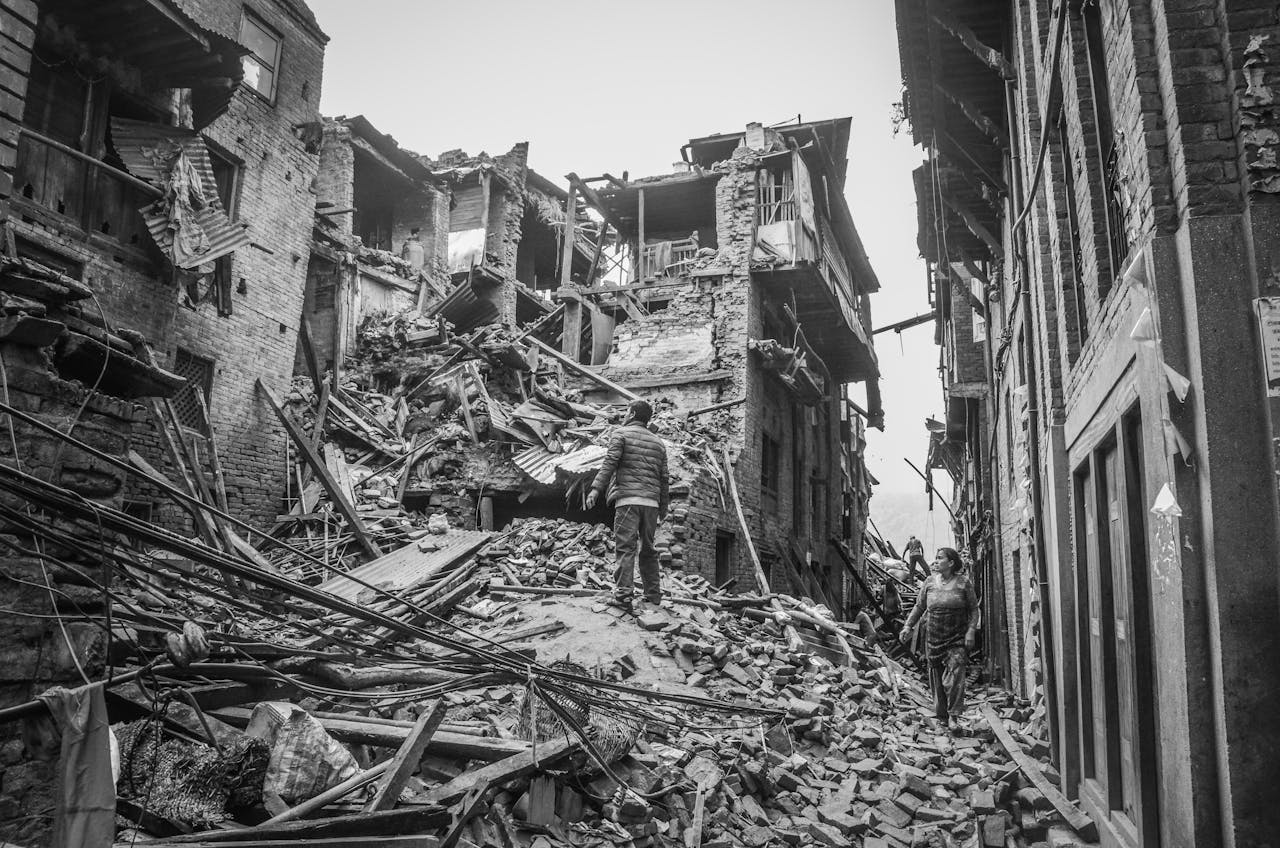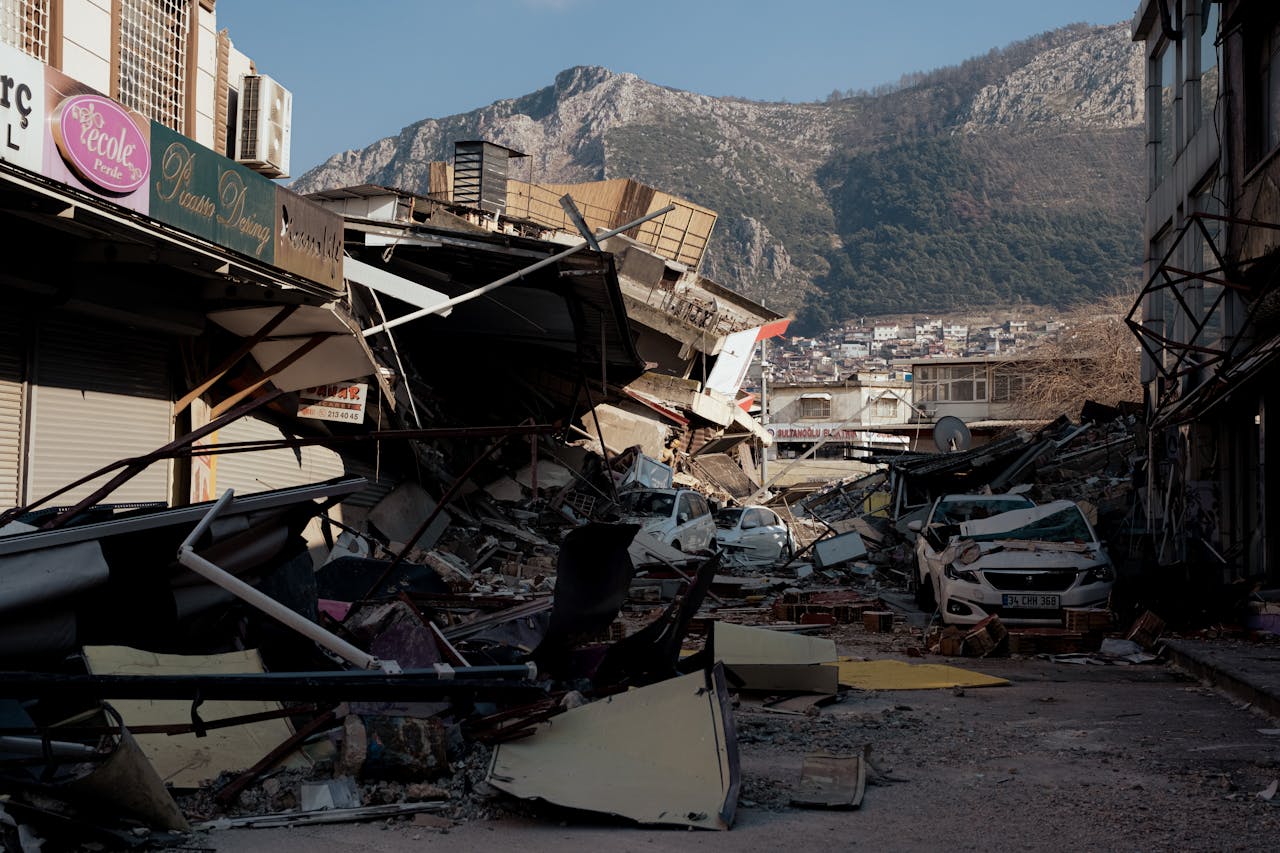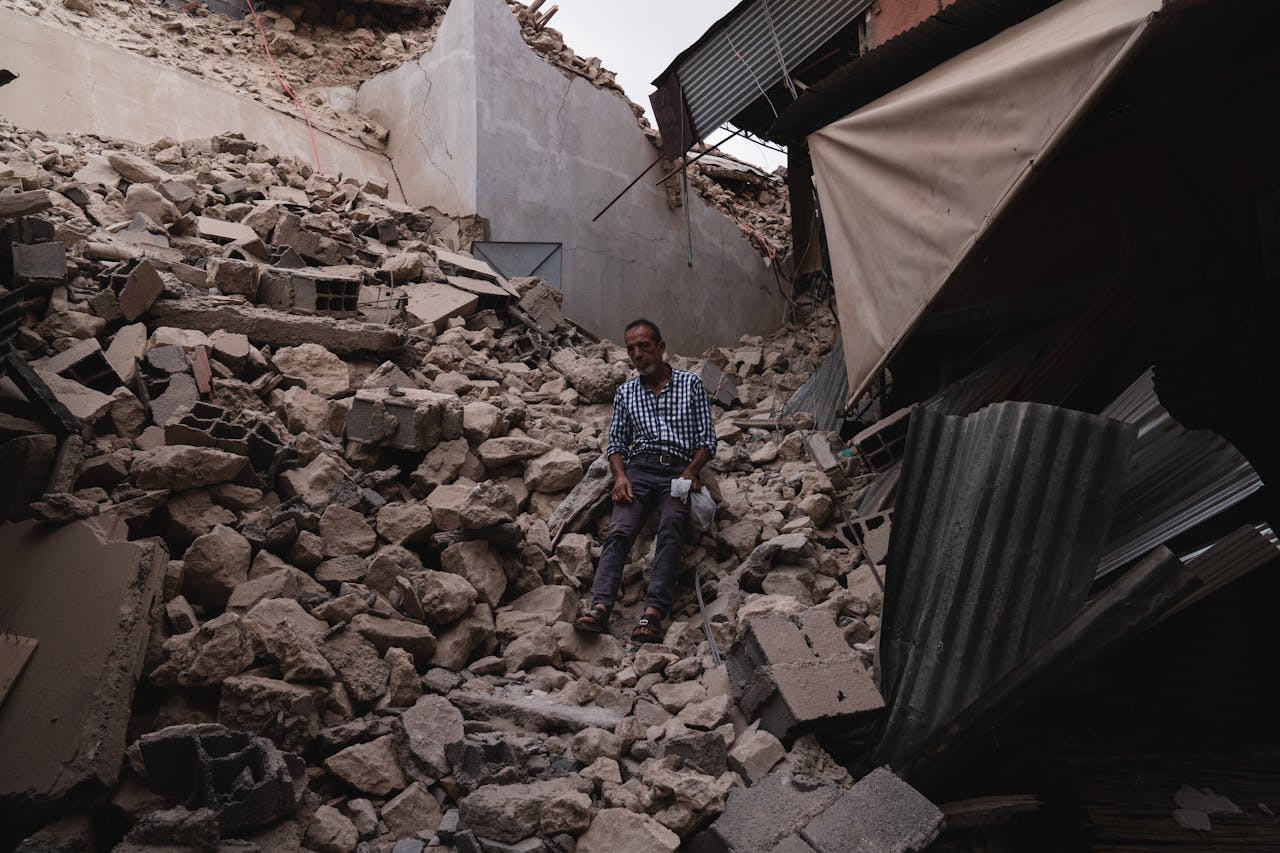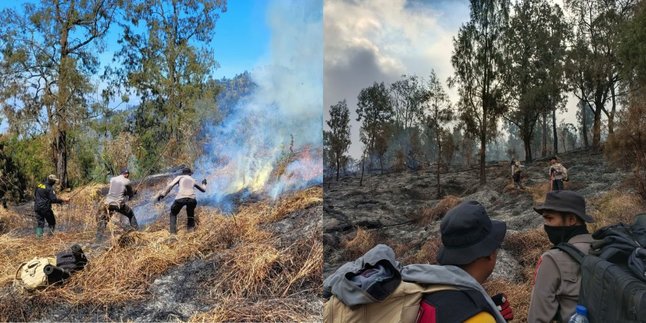
Javanese Primbon Book Because of Earthquakes: Interpreting Messages from Nature
Earthquakes are natural phenomena that often occur in Indonesia. In addition to being viewed from a scientific perspective, the Javanese people have had their own interpretations of earthquake events recorded in primbon books since ancient times. Let us delve deeper into the meaning of earthquakes according to Javanese local wisdom.
1. Understanding Javanese Primbon

earthquake (credit: pexels.com)
Javanese Primbon is a heritage book from ancestors that contains various kinds of titen knowledge or observational knowledge regarding natural phenomena and life. One of the discussions in the primbon is the interpretation of earthquake events. The Javanese community believes that earthquakes carry hidden messages from the Creator.
In Javanese, earthquakes are known as "lindu". The primbon links the meaning of earthquakes to the time they occur, whether it be month or day/night. This interpretation is based on observations and the life experiences of Javanese ancestors over hundreds of years.
Although it cannot be scientifically proven, the primbon is still considered a local wisdom that should be preserved. For some communities, the primbon serves as a guide for self-reflection and introspection when natural disasters occur.
2. History of the Javanese Primbon Book
The tradition of writing primbon in Java has been ongoing for centuries. One of the oldest surviving primbons is the Kitab Primbon Betaljemur Adammakna written by Kanjeng Pangeran Harya Tjakraningrat from the Yogyakarta Palace in the 18th century.
In later times, many Javanese scholars and cultural figures contributed to writing and developing primbon, including Raden Ngabehi Ranggawarsita, a great poet from the Surakarta Palace in the 19th century. Primbon continued to evolve and was passed down from generation to generation.
In the modern era, primbon is still preserved and published in book form. Some popular primbons include Kitab Primbon Betaljemur Adammakna, Primbon Jawa Serbaguna, and Primbon Atassadhur Adammakna. Although times have changed, public interest in primbon remains quite high.
3. Earthquake Interpretations Based on the Javanese Month

earthquake (credit: pexels.com)
In Javanese primbon, the meaning of earthquakes is interpreted based on the month in which they occur according to the Javanese calendar. Here are some examples of these interpretations:
- Sura: If an earthquake occurs during the day, it signifies that an outbreak of disease will emerge. If it occurs at night, it will indicate a shortage of food supplies.
- Sapar: An earthquake during the day indicates that many people will move to different places. If it occurs at night, it signifies that life will prosper.
- Mulud: An earthquake during the day means there will be many slanders. If it occurs at night, the rainy season accompanied by strong winds will come.
- Bakda Mulud: An earthquake during the day signifies many disputes. If it occurs at night, a period of prosperity will follow.
- Jumadilawal: An earthquake during the day means there will be much evil. If it occurs at night, it indicates a long drought will happen.
Interpretations for other months also have various meanings, both positive and negative. However, it is important to remember that these interpretations are not absolute and are more a form of local wisdom inherited from ancestors.
4. Meaning of Earthquakes Based on Time
In addition to the month, Javanese primbon also interprets the meaning of earthquakes based on the time they occur, whether during the day or at night. Generally, earthquakes that occur during the day tend to be interpreted as bringing unfavorable signs. Meanwhile, earthquakes at night are more often interpreted as positive signs.
Some examples of earthquake interpretations based on time:
- Daytime earthquakes: A sign of chaos, disputes, outbreaks of disease, or economic difficulties.
- Nighttime earthquakes: A sign of upcoming prosperity, tranquility, or other good things.
However, it should be noted that these interpretations are not always consistent for every month. There are times when nighttime earthquakes are also interpreted as bringing unfavorable signs, depending on the month in which they occur.
5. How to Read Earthquake Primbon

earthquake (credit: pexels.com)
To read the earthquake interpretation in Javanese primbon, there are several things to consider:
- Determine the date of the earthquake according to the Javanese calendar
- Pay attention to the Javanese month when the earthquake occurred
- Note whether the earthquake occurred during the day or night
- Read the interpretation that corresponds to the month and time of the earthquake
- Understand that the interpretation is symbolic, not a definite prediction
It is important to remember that primbon should be read as local wisdom, not as an absolute guide. The primbon interpretation is more appropriately used as material for self-reflection and community introspection.
6. Benefits of Studying Earthquake Primbon
Although it cannot be scientifically proven, studying earthquake primbon still has several benefits:
- Preserving local wisdom and Javanese cultural heritage
- Understanding the ancestors' perspective on natural phenomena
- Increasing awareness of natural disasters
- Serving as material for self-reflection and community introspection
- Expanding knowledge about the culture of the archipelago
However, it is important to remember to prioritize a scientific approach when facing natural disasters. Primbon should be viewed as a cultural heritage, not the main guideline.
7. Difference Between Primbon and Seismology

earthquake (credit: pexels.com)
Although both discuss earthquakes, there are fundamental differences between Javanese primbon and modern seismology:
- Primbon is mystical and symbolic, while seismology is scientific
- Primbon interprets the meaning of earthquakes, seismology explains the causes of earthquakes
- Primbon is based on empirical observation, seismology uses scientific methods
- Primbon cannot predict earthquakes, seismology can predict earthquake potential
- Primbon is a cultural heritage, seismology is a branch of scientific knowledge
Despite their differences, both can coexist as a wealth of human knowledge. Primbon represents local wisdom, while seismology represents the advancement of science.
8. Controversy Surrounding Earthquake Primbon
The use of primbon to interpret earthquakes is not without controversy. Some common criticisms include:
- Considered unscientific and unable to prove its validity
- Has the potential to cause unnecessary panic in society
- Can divert attention from actual disaster mitigation efforts
- Regarded as a form of superstition that is not in line with religious teachings
- Can be misused by irresponsible parties
On the other hand, supporters of primbon argue that this text is a cultural heritage that deserves to be preserved. They emphasize that primbon should be read as local wisdom, not as an absolute guide.
9. Earthquake Primbon in the Modern Era

earthquake (credit: pexels.com)
In the midst of technological and scientific advancements, earthquake primbon still has its own enthusiasts. Some phenomena related to earthquake primbon in the modern era include:
- Digitalization of ancient primbon manuscripts
- Publication of primbon books in modern formats
- Emergence of mobile applications based on primbon
- Discussions about primbon on social media after earthquake events
- Efforts to preserve primbon as an intangible cultural heritage
Although it is no longer the main reference, earthquake primbon remains a part of Indonesia's cultural heritage that deserves to be preserved. The challenge is how to position primbon proportionally amidst the advancements in science.
10. Conclusion
Javanese primbon books about earthquakes are a legacy of local wisdom that is interesting to study. Although they cannot be scientifically proven, primbon reflects the worldview of Javanese ancestors towards natural phenomena. In the modern era, primbon should be viewed as a cultural treasure, not as the main guideline for facing disasters. The most important thing is to prioritize scientific approaches and preparedness in facing potential natural disasters.
(kpl/dhm)
Disclaimer: This translation from Bahasa Indonesia to English has been generated by Artificial Intelligence.


















